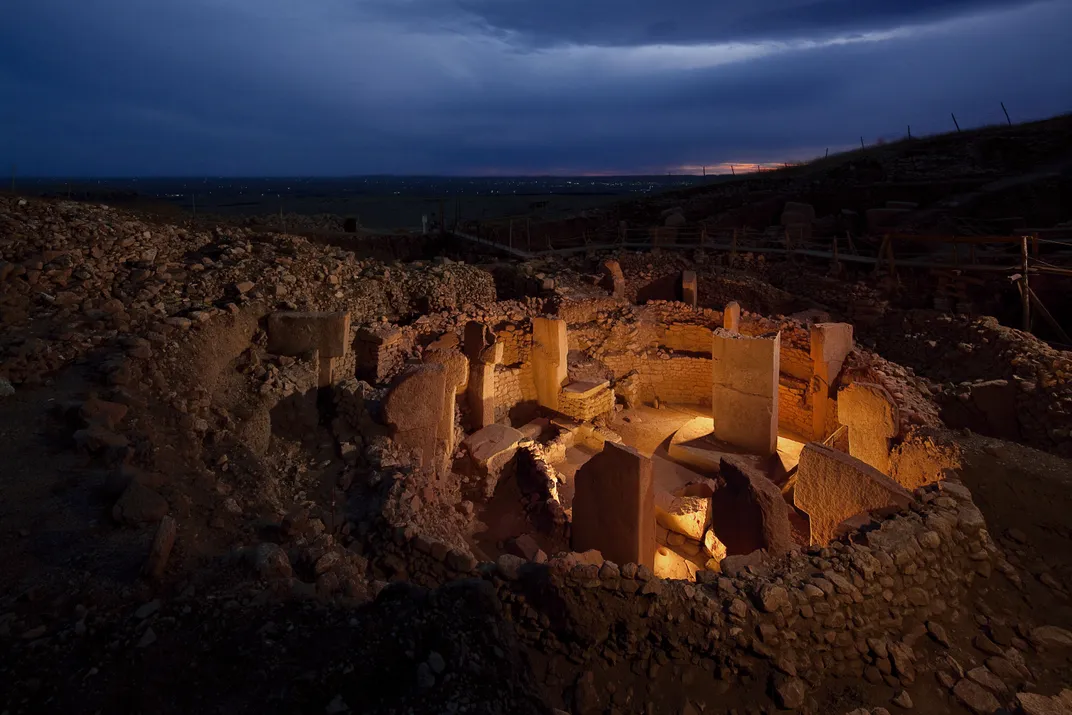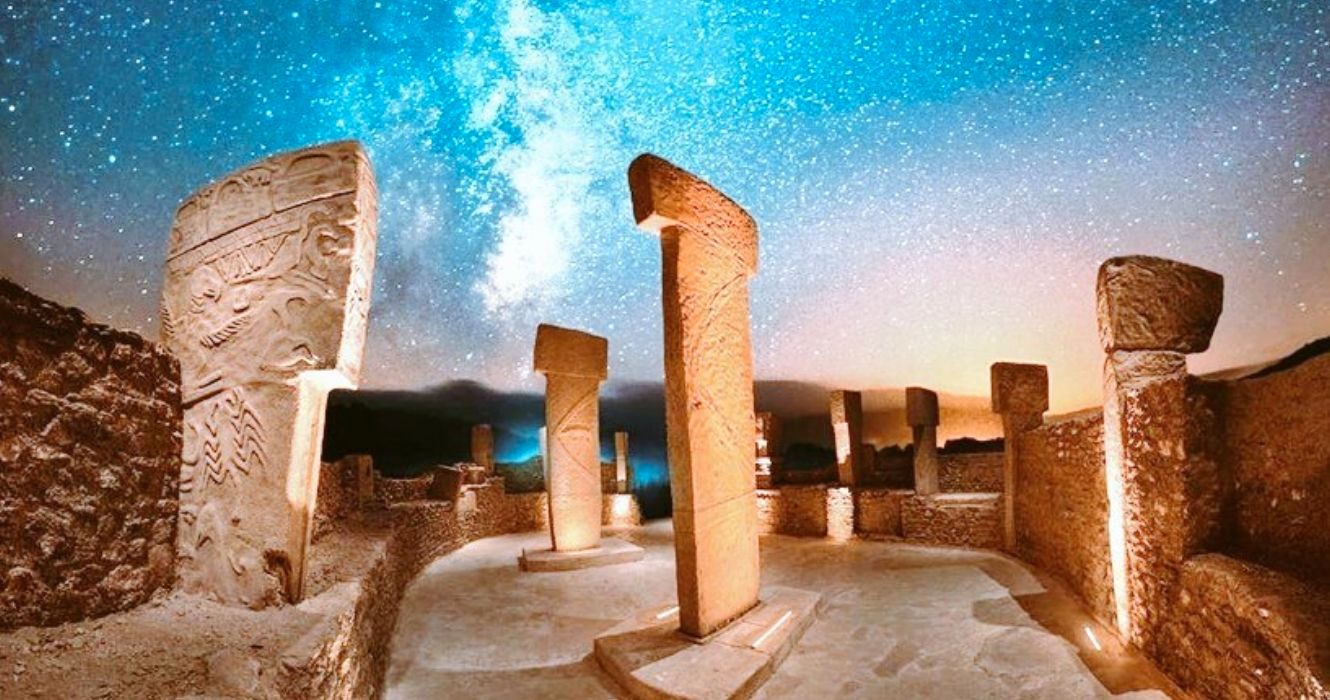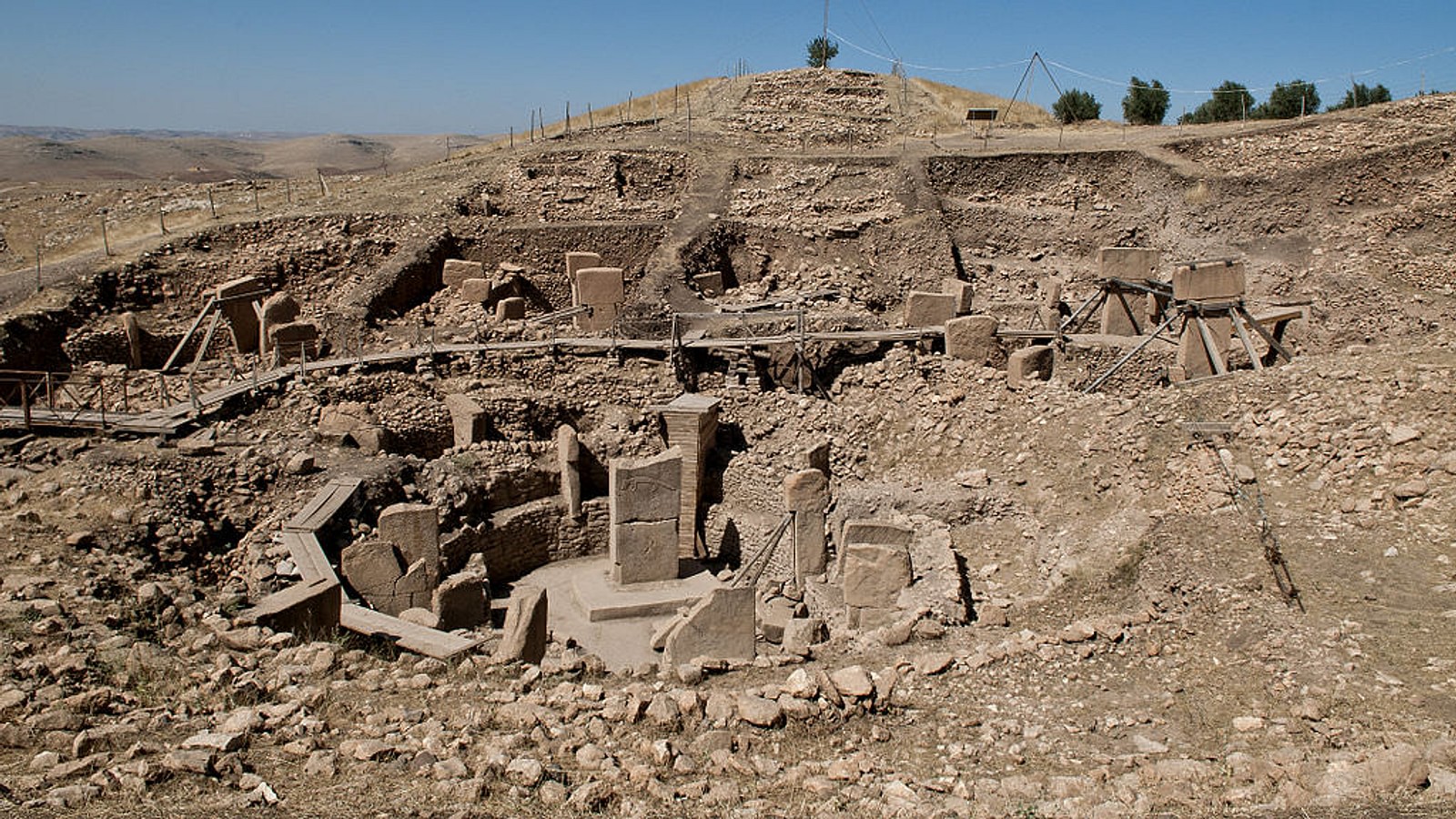Turkey's Time Machine: Discover Göbekli Tepe

Welcome to the fascinating world of ancient history! In this blog post, we will explore the incredible site of Göbekli Tepe and its historical significance. You'll learn about the fascinating discoveries made at this site and their implications for our understanding of human history. So, buckle up and get ready to travel back in time to one of the most fascinating and mysterious periods in human history!
Introduction to Göbekli Tepe and its historical significance
Göbekli Tepe is an archaeological site in southeastern Turkey that was first discovered in the 1960s. The site is estimated to be around 12,000 years old, making it one of the oldest and most important in the world. The site has been described as the "world's first temple" and is home to several large circular structures constructed using massive, T-shaped limestone pillars.
The discovery of Göbekli Tepe has challenged our understanding of human history and has prompted scientists to rethink our early human ancestors. Before the discovery of Göbekli Tepe, it was widely believed that humans began building large structures only after settling in agricultural communities. However, the discovery of this site suggests that humans may have been capable of sophisticated architectural feats long before they began farming.
Overview of the blog post content
In this blog post, we will cover the following topics:
- The discovery and excavation of Göbekli Tepe
- The unique architecture of the site
- The artefacts and artwork found at Göbekli Tepe
- The implications of Göbekli Tepe for our understanding of human history
So sit back, relax, and enjoy the journey as we explore one of the most fascinating archaeological sites in the world!

The Discovery
Welcome to this journey back in time to explore the wonders of Göbekli Tepe. You may be wondering how such an incredible archaeological site was discovered in the first place. Let’s dive into the exciting story of its discovery and excavation!
Discovery of Göbekli Tepe and its excavation process
The site of Göbekli Tepe was discovered by chance in the 1960s when a farmer in southeastern Turkey stumbled upon a large stone slab while ploughing his field. Excavation of the site began in the 1990s, led by German archaeologist Klaus Schmidt.
The excavation process at Göbekli Tepe is unique, as ancient peoples intentionally buried the structures, likely as a ritualistic practice. This intentional burial of the site aided in its preservation, protecting it from erosion and other damaging natural forces.
The significance of the discovery in the field of archaeology
The discovery of Göbekli Tepe has had profound implications for archaeology and has challenged our understanding of human history. Before the site's discovery, it was believed that humans could only build large, complex structures after the development of agriculture and the establishment of permanent settlements. However, Göbekli Tepe is estimated to have been constructed around 10,000 BCE, predating these cultural developments by several thousand years.
The architectural and artistic sophistication of the site suggests that ancient humans were capable of much more than previously thought. The discovery of Göbekli Tepe has prompted scientists to reconsider the timeline of human cultural development and has led to new theories and hypotheses about our early ancestors.
In the next sections, we will dive deeper into the specific features of Göbekli Tepe, including its unique architecture and the artefacts and artwork found at the site. Join us on this journey to gain a better understanding of the incredible historical significance of Göbekli Tepe!

The Site
Description of the site and its architectural features
Göbekli Tepe is a complex of prehistoric stone structures located in southeastern Turkey. The site, which covers an area of about 22 acres, consists of a series of circular and rectangular enclosures, each containing several standing stones and pillars, some of which reach over 16 feet in height.
The architectural sophistication of Göbekli Tepe is truly remarkable, especially considering its age. The structures were constructed using large, carefully carved stone blocks, then intricately decorated with reliefs of animals, gods, and other mythical creatures.
The mysteries of Göbekli Tepe
Despite the incredible achievements of its builders, much about Göbekli Tepe remains a mystery. For example, we do not know the purpose or function of the site, nor do we know who built it or how it was used. However, there are several theories and hypotheses.
One possibility is that Göbekli Tepe was a ritual or religious activity centre. The artwork at the site depicts various animals and gods, some of whom may have been worshipped by ancient peoples. Other experts suggest that the site may have been a burial ground or a gathering place for regional tribes.
Regardless of its function, the discovery of Göbekli Tepe has upended our understanding of human cultural development. The site predates the invention of agriculture and permanent settlements, suggesting that ancient humans were capable of much more than we previously thought.
Now that you have a better understanding of the architectural features and mysteries of Göbekli Tepe join us in the next section as we delve into the artefacts and artwork found at this incredible site.
The Age
Welcome back to your journey through the incredible site of Göbekli Tepe. This section will explore the age of this archaeological wonder and its historical context. Göbekli Tepe is estimated to be over 11,000 years old, which makes it one of the oldest and most important archaeological sites yet discovered. It predates the invention of agriculture and permanent settlements, which were once thought to be the catalysts for the emergence of human civilization. The discovery of this site suggests that ancient humans were capable of much more than previously assumed.
The age of Göbekli Tepe and its historical context
Göbekli Tepe was built during a period known as the Pre-Pottery Neolithic, a time when people were beginning to transition from nomadic hunter-gatherer lifestyles to settled agricultural communities. The site is located in southeastern Turkey, near the border with Syria, which is believed to have been an important region for developing early civilizations.
Before the discovery of Göbekli Tepe, most researchers believed that the first complex human societies developed in the Fertile Crescent. This region extends from the eastern Mediterranean to the Persian Gulf. However, the discovery of this ancient site suggests that the history of human civilization may be much more complex and varied than previously thought.
Theories about the purpose of Göbekli Tepe
Despite its age and importance, much about Göbekli Tepe remains a mystery, including its function and purpose. Archaeologists have found no evidence of any permanent settlements or agriculture nearby, which suggests that the site was not used for daily activities.
Various theories have been proposed over the years, including that Göbekli Tepe was a place for religious rituals or gatherings of regional tribes. Its artwork, which features animals and mythical creatures, supports this theory. Another possibility is that it was a burial site, but no human remains have been found at the site.
The age of Göbekli Tepe and its historical context challenge our assumptions about human civilization. Its purpose remains a mystery, but its architectural features and decorated pillars make it one of the most significant archaeological finds of the 21st century.

The Artefacts
This section will explore the amazing artefacts found at the site and their significance in understanding the people who built it. These artefacts are a window into the past, providing clues about the ancient peoples who erected the massive stone structures.
Overview of the artefacts found at Göbekli Tepe
Archaeologists have uncovered many artefacts at Göbekli Tepe, including tools, pottery, and stone carvings. The most striking artefacts throughout the site are the T-shaped pillars elaborately decorated with intricate designs. The pillars, which weigh several tons each, were quarried from nearby hills and transported to the site using a system of ramps and sledges.
Other artefacts found at Göbekli Tepe include animal bones and remains of food, which have provided insights into the diet of the site's builders. The discovery of many stone tools suggests that the site was once a centre for producing and distributing tools and other goods.
Their significance in understanding the people who built the site
The artefacts found at Göbekli Tepe offer a fascinating glimpse into the lives of the people who built the site. The intricate carvings on the T-shaped pillars suggest that the builders had advanced artistic skills and a sophisticated understanding of symbolism and mythology. The depictions of animals and mythical creatures on the pillars suggest that the site may have had religious significance.
The discovery of food remains and stone tools suggests that the site was an important centre for trade and commerce and that the builders had a complex social structure. The fact that the site was built when most people lived as nomadic hunter-gatherers challenges the idea that the rise of agriculture was the primary catalyst for the development of human civilization.
The artefacts found at Göbekli Tepe offer a fascinating glimpse into the lives of the ancient peoples who built this remarkable site. Their significance lies not only in what they tell us about the past but in how they challenge our assumptions about human civilization and the development of early societies.

The Animals
This section will explore the representation of animals found at the site and their significance in ancient cultures.
Discussion of animal representations found at the site
One of the most fascinating aspects of Göbekli Tepe is the numerous animal representations found throughout the site. The T-shaped pillars, weighing several tons each, are decorated with intricate carvings of animals such as foxes, bears, snakes, scorpions, and birds. These animals are depicted lifelike with incredible detail and skill, suggesting a deep understanding of animal anatomy and behaviour.
Other animal representations, such as statues, figurines, and reliefs, have also been discovered at the site. These include representations of lions, bears, and other large mammals.
The significance of animal representations in ancient cultures
The representation of animals in ancient cultures has deep significance, providing insights into the beliefs, values, and practices of those who created them. In many ancient cultures, animals were considered sacred and believed to have supernatural powers. They were associated with specific deities or represented the embodiment of divine qualities.
In addition, animals were often used as symbols to represent different concepts and ideas. For example, the snake was often associated with rebirth and regeneration, while the bull symbolised fertility and strength. The presence of these animals at Göbekli Tepe suggests that the site may have had religious significance and was possibly used as a centre for ritual and ceremony.
The representation of animals at Göbekli Tepe offers a glimpse into the beliefs and cultural practices of the ancient peoples who built the site. These representations illustrate the importance of animals as symbols of divinity and power in ancient cultures. The intricate carvings and lifelike depictions of these animals suggest an advanced understanding of animal anatomy and behaviour, highlighting the impressive artistic skills of the site's builders.

The People
This section will delve into the people who built the site and their potential religious practices and beliefs.
Understanding the people who built Göbekli Tepe
The builders of Göbekli Tepe were early humans who lived in the region approximately 11,500 years ago. They were hunter-gatherers who lived in small, mobile communities in modern-day Turkey.
However, the creation of Göbekli Tepe, with its massive stone pillars weighing several tons each, suggests that this civilization was far more advanced than previously thought. The intricate carvings on the pillars and the precision of their placement suggest the builders had a deep understanding of engineering and construction.
Their possible religious practices and beliefs
The intricate animal carvings and statues at Göbekli Tepe strongly suggest that the site was used for religious ceremonies and practices. The animals depicted at the site are believed to have had strong religious significance, representing deities or embodying divine qualities.
The site itself may have been considered sacred, with the T-shaped pillars potentially representing gods or spirits. The carvings and symbols at the site suggest that these hunter-gatherers had complex spiritual beliefs and practices despite their nomadic lifestyle.
Göbekli Tepe gives us a glimpse into the beliefs and practices of an ancient civilization far more advanced than previously believed. The precision and skill of the builders suggest that they were innovative and intelligent people. In contrast, the intricate animal representations suggest a deep spiritual significance and understanding of animal symbolism.
The Future
Congratulations, you've made it to the final section of your journey through Göbekli Tepe. In this section, we will discuss the site's future and preservation and the impact of tourism on the area.
Future of Göbekli Tepe and its preservation
As Göbekli Tepe gains more international recognition, it is important to consider how to preserve and protect the site for future generations. The extreme weather conditions in the region and the potential risks of earthquakes make preserving the site difficult.
However, measures are being taken to ensure the long-term survival of Göbekli Tepe. The area has been designated a UNESCO World Heritage site and partially covered to protect it from the elements. The Turkish government has also allocated funds for further excavation and preservation efforts.
Tourism and the impact on the site
The increasing popularity of Göbekli Tepe as a tourist destination brings opportunities and challenges.
On one hand, tourism can bring much-needed revenue to the area and help fund preservation efforts. It also allows visitors to experience and learn about this amazing archaeological site.
On the other hand, an influx of tourists can hurt the site. Increased foot traffic can damage the fragile structures and carvings, and the site may become overcrowded, detracting from the visitor experience.
Efforts are being made to balance the benefits of tourism with the need to protect Göbekli Tepe. Visitors are encouraged to respect the site by not touching the structures, staying on designated paths, and not littering.
We hope that Göbekli Tepe will continue to be a source of wonder and learning for future generations and that we can work together to ensure its preservation for years.
